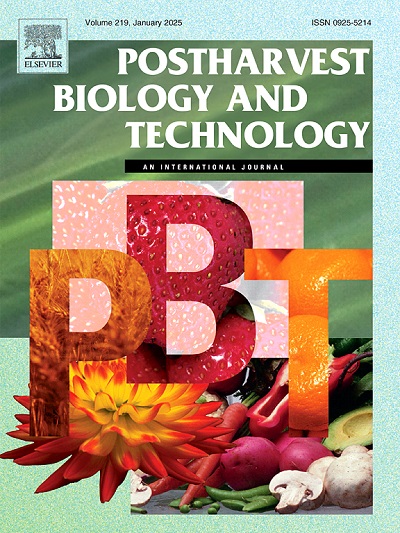Biocontrol effects of volatile organic compounds released from Burkholderia sola NAU20 to strawberry anthracnose caused by Colletotrichum gloeosporioides
IF 6.4
1区 农林科学
Q1 AGRONOMY
引用次数: 0
Abstract
Strawberry anthracnose is a fungal disease caused by Colletotrichum gloeosporioides, which can lead to significant economic losses in postharvest strawberries. Biological control is a greener and safer strategy. In this study, the hyphal growth and conidial germination of Colletotrichum gloeosporioides were found to be significantly inhibited by volatile compounds (VOCs) produced by Burkholderia sola NAU20. Ethyl trans-2-octenoate demonstrated the strongest antifungal activity among the tested VOCs, with a minimum inhibitory concentration (MIC) of 0.448 mL L−1. The structure of fungal cell wall was severely disrupted, and a significant accumulation of ROS and DNA fragmentation indicated that apoptosis may be induced in ethyl trans-2-octenoate treated cells. Ethyl trans-2-octenoate can completely inhibit the infection of C. gloeosporioides on strawberries at a level of 2 ×MIC within 5 d. Furthermore, in addition to the direct antifungal effect of ethyl trans-2-octenoate, the induction of phenylpropanoids and flavonoids biosynthesis enhanced the suppression of fungal infection.
求助全文
约1分钟内获得全文
求助全文
来源期刊

Postharvest Biology and Technology
农林科学-农艺学
CiteScore
12.00
自引率
11.40%
发文量
309
审稿时长
38 days
期刊介绍:
The journal is devoted exclusively to the publication of original papers, review articles and frontiers articles on biological and technological postharvest research. This includes the areas of postharvest storage, treatments and underpinning mechanisms, quality evaluation, packaging, handling and distribution of fresh horticultural crops including fruit, vegetables, flowers and nuts, but excluding grains, seeds and forages.
Papers reporting novel insights from fundamental and interdisciplinary research will be particularly encouraged. These disciplines include systems biology, bioinformatics, entomology, plant physiology, plant pathology, (bio)chemistry, engineering, modelling, and technologies for nondestructive testing.
Manuscripts on fresh food crops that will be further processed after postharvest storage, or on food processes beyond refrigeration, packaging and minimal processing will not be considered.
 求助内容:
求助内容: 应助结果提醒方式:
应助结果提醒方式:


